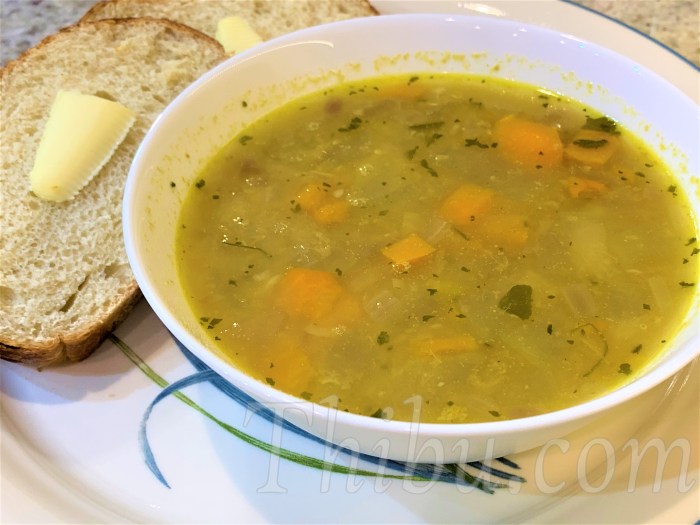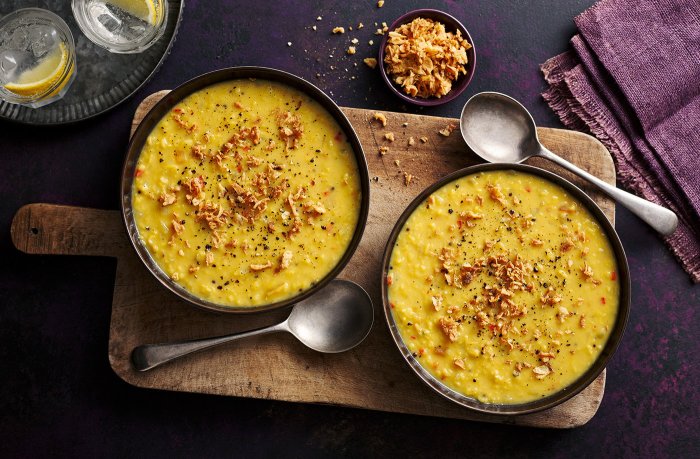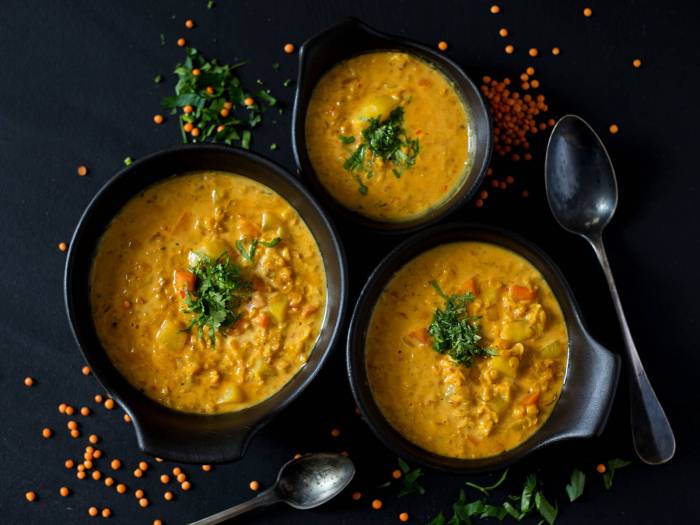Dhal Soup: A Culinary Journey Through South Asia: Recipe For Dhal Soup

Source: thibu.com
Recipe for dhal soup – Dhal soup, a staple in many South Asian cuisines, boasts a rich history and cultural significance. Its origins trace back centuries, with variations evolving across diverse regions, reflecting local ingredients and culinary traditions. From the vibrant spices of South India to the creamy textures of North India, dhal soup offers a versatile and nutritious culinary experience, prized for its simplicity and adaptability.
Introduction to Dhal Soup

Source: tesco.com
Dhal soup’s history is interwoven with the agricultural practices of the Indian subcontinent, where lentils have been cultivated for millennia. Its cultural significance extends beyond mere sustenance; it’s a dish often shared during celebrations and everyday meals, embodying community and family bonds. Regional variations are vast, showcasing the diversity of South Asian cooking. For example, South Indian dhal often features coconut milk and tamarind, creating a tangy and creamy profile, while North Indian versions may incorporate more robust spices like cumin and garam masala.
Beyond India, variations are found in Sri Lanka, Bangladesh, and Nepal, each adding its own unique twist. The health benefits are numerous, including high protein content, dietary fiber, and essential vitamins and minerals.
Essential Ingredients for Dhal Soup
The foundation of any good dhal soup lies in the selection of lentils and spices. Different lentils impart distinct textures and flavors, significantly impacting the final dish.
| Lentil Type | Origin | Texture | Flavor Profile |
|---|---|---|---|
| Red Lentils (Masoor Dal) | India | Soft, mushy | Mild, earthy |
| Yellow Lentils (Toor Dal) | India | Slightly firm | Nutty, slightly sweet |
| Green Lentils (Moong Dal) | India | Firm, holds shape well | Slightly sweet, grassy |
| Brown Lentils (Masoor Dal) | India | Firm, holds shape well | Earthy, slightly nutty |
Common spices play a crucial role in building the depth and complexity of flavors. Cumin seeds add warmth and earthiness, while turmeric contributes its distinctive golden hue and anti-inflammatory properties. Garam masala, a blend of ground spices, provides a rich, aromatic complexity. Ginger and garlic add pungent notes, while chili powder introduces heat, adjustable to individual preferences.
Substitutions are possible; for instance, vegetable broth can replace water for added depth, and coconut milk can add creaminess and richness.
Recipe Variations: Exploring Different Flavors

Source: kitchenstories.io
Dhal soup recipes demonstrate remarkable regional diversity. A South Indian version might feature coconut milk, tamarind pulp, curry leaves, and mustard seeds, creating a tangy, aromatic, and slightly sweet profile. A North Indian variation may use ghee (clarified butter), ginger, garlic, and a generous blend of garam masala, resulting in a richer, spicier soup. A Bangladeshi version might incorporate a touch of sweetness from jaggery (unrefined cane sugar) and the smoky flavor of panch phoron (a five-spice blend).
Different spice combinations dramatically alter the final flavor. For example, the inclusion of fenugreek leaves (methi) adds a slightly bitter, earthy note, while asafoetida (hing) contributes a unique pungent aroma. Recipes can be easily adjusted for spiciness; milder versions can omit chili powder altogether, while spicier variations can incorporate fresh chilies or a spicier chili powder blend. A range of recipes from mild to very spicy can be created to cater to individual preferences.
Cooking Methods and Techniques, Recipe for dhal soup
Dhal soup is remarkably easy to prepare, adaptable to various cooking methods. Using a pressure cooker significantly reduces cooking time. The slow cooker method allows for a gentle simmer, developing deeper flavors. Achieving a creamy texture is often desired; this can be achieved by blending a portion of the cooked dhal before returning it to the pot.
Pressure Cooker Method: Rinse lentils, combine with water and spices, pressure cook for 10-15 minutes. Slow Cooker Method: Combine lentils, water, and spices in a slow cooker, cook on low for 6-8 hours or high for 3-4 hours. Creamy Texture: Blend a portion of the cooked dhal until smooth, then stir back into the pot.
Serving Suggestions and Accompaniments
Dhal soup pairs beautifully with a variety of side dishes. Fluffy rice, naan bread, or roti are classic accompaniments, absorbing the flavorful broth. A simple raita (yogurt dip) adds a cooling counterpoint to the spices. Garnishing enhances both the visual appeal and flavor. Fresh cilantro, a squeeze of lime juice, or a dollop of plain yogurt add freshness and brightness.
Customization is easy for various dietary needs. Vegetarian versions are the norm, while vegan adaptations simply omit any dairy products. Gluten-free options are naturally inherent as dhal soup doesn’t contain gluten.
Visual Representation of Dhal Soup
A perfectly cooked dhal soup displays a vibrant, appealing appearance. The color ranges from a deep golden orange (with turmeric) to a light beige (depending on the lentils used). The texture should be creamy and smooth, with lentils well-cooked but not mushy. The consistency should be neither too thick nor too thin, ideally coating the back of a spoon.
A simple dhal soup recipe often centers around lentils and warming spices. If you’re looking for a similarly comforting but different soup, you might enjoy a creamy alternative like the one found in this mushroom soup recipe easy guide. Both recipes offer satisfying, hearty options, perfect for a chilly evening, but dhal provides a unique, earthy flavor profile.
The visual appeal is significantly enhanced by vibrant garnishes like fresh cilantro, a squeeze of lime, and a sprinkle of chili powder. Serving in attractive bowls further enhances the presentation.
FAQs
Can I use red lentils instead of yellow lentils?
Yes, red lentils cook much faster and create a smoother, creamier soup. Adjust cooking time accordingly.
How long can I store leftover dhal soup?
Leftover dhal soup can be stored in an airtight container in the refrigerator for up to 3-4 days.
Can I freeze dhal soup?
Yes, dhal soup freezes well. Allow it to cool completely before freezing in airtight containers for up to 2-3 months.
What if my dhal soup is too thick?
Add a little water or vegetable broth to thin the soup to your desired consistency.
What if my dhal soup is too thin?
Simmer the soup uncovered for a while to reduce the liquid and thicken the soup.
